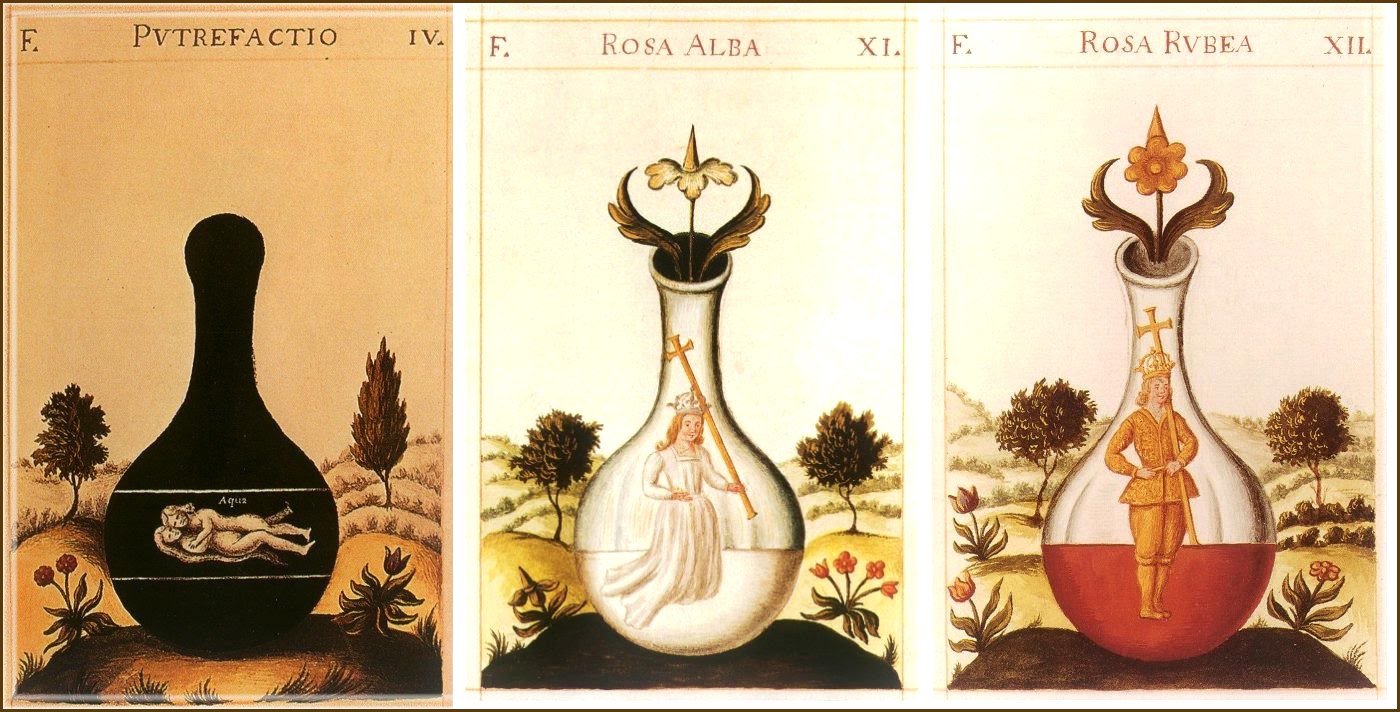Rubedo on:
[Wikipedia]
[Google]
[Amazon]
 Rubedo is a
Rubedo is a
Jung’s Quaternity, Mandalas, the Philosopher's Stone and the Self
Alchemical processes {{psych-stub
 Rubedo is a
Rubedo is a Latin
Latin ( or ) is a classical language belonging to the Italic languages, Italic branch of the Indo-European languages. Latin was originally spoken by the Latins (Italic tribe), Latins in Latium (now known as Lazio), the lower Tiber area aroun ...
word meaning "redness" that was adopted by alchemists
Alchemy (from the Arabic word , ) is an ancient branch of natural philosophy, a philosophical and protoscientific tradition that was historically practised in China, India, the Muslim world, and Europe. In its Western form, alchemy is first ...
to define the fourth and final major stage in their magnum opus
A masterpiece, , or ; ; ) is a creation that has been given much critical praise, especially one that is considered the greatest work of a person's career or a work of outstanding creativity, skill, profundity, or workmanship.
Historically, ...
. Both gold and the philosopher's stone
The philosopher's stone is a mythic alchemical substance capable of turning base metals such as mercury into gold or silver; it was also known as "the tincture" and "the powder". Alchemists additionally believed that it could be used to mak ...
were associated with the color red, as rubedo signaled alchemical success, and the end of the great work. Rubedo is also known by the Greek word ''iosis''.
Interpretation
The three alchemical stages preceding rubedo were nigredo (blackness), which represented putrefaction and spiritual death;albedo
Albedo ( ; ) is the fraction of sunlight that is Diffuse reflection, diffusely reflected by a body. It is measured on a scale from 0 (corresponding to a black body that absorbs all incident radiation) to 1 (corresponding to a body that reflects ...
(whiteness), which represented purification; and citrinitas (yellowness), the solar dawn or awakening. Some sources describe the alchemical process as three-phased with citrinitas serving as mere extension and takes place between albedo and rubedo. The rubedo stage entails the attempt of the alchemist to integrate the psychospiritual outcomes of the process into a coherent sense of self before its re-entry to the world. The stage can take some time or years to complete due to the required synthesis and substantiation of insights and experiences.
The symbols used in alchemical writing and art to represent this red stage can include blood
Blood is a body fluid in the circulatory system of humans and other vertebrates that delivers necessary substances such as nutrients and oxygen to the cells, and transports metabolic waste products away from those same cells.
Blood is com ...
, a phoenix, a rose
A rose is either a woody perennial plant, perennial flowering plant of the genus ''Rosa'' (), in the family Rosaceae (), or the flower it bears. There are over three hundred Rose species, species and Garden roses, tens of thousands of cultivar ...
, a crowned king, or a figure wearing red clothes. Countless sources mention a reddening process; the seventeenth dictum of the 12th century Turba Philosophorum is one example:
Psychology
In the framework of psychological development (especially with followers ofJungian psychology
Analytical psychology (, sometimes translated as analytic psychology; also Jungian analysis) is a term referring to the psychological practices of Carl Jung. It was designed to distinguish it from Freud's psychoanalytic theories as their s ...
), these four alchemical steps are viewed as analogous to the process of attaining individuation
The principle of individuation, or ', describes the manner in which a thing is identified as distinct from other things.
The concept appears in numerous fields and is encountered in works of Leibniz, Carl Jung, Gunther Anders, Gilbert Simondo ...
or the process that allows an individual to attain the integration of opposites, their transcendence, and, finally, emergence out of an undifferentiated unconscious. In an archetypal schema, rubedo represents the Self
In philosophy, the self is an individual's own being, knowledge, and values, and the relationship between these attributes.
The first-person perspective distinguishes selfhood from personal identity. Whereas "identity" is (literally) same ...
archetype
The concept of an archetype ( ) appears in areas relating to behavior, historical psychology, philosophy and literary analysis.
An archetype can be any of the following:
# a statement, pattern of behavior, prototype, "first" form, or a main mo ...
, and is the culmination of the four stages, the merging of ego and Self. It is also described as a stage that gives birth to a new personality. Represented by the color of blood in alchemy, the stage indicates a process that cannot be reversed since it involves the struggle of the self towards its manifestation.
The Self manifests itself in "wholeness," a point in which a person discovers their true nature. Another interpretation phrased it as "reunification" which entail the reunion of body, soul, and spirit, leading to a diminished inner conflict.
See also
* ''Psychology and Alchemy
''Psychology and Alchemy'', volume 12 in '' The Collected Works of C. G. Jung'', is Carl Jung's study of the analogies between alchemy, Christian dogma, and psychological symbolism.
Alchemy is central to Jung's hypothesis of the collective unco ...
''
* Unity of opposites
The unity of opposites ( or ) is the philosophical idea that opposites are interconnected by the way each is defined in relation to the other. Their interdependence unites the seemingly opposed terms.
The unity of opposites is sometimes equated wi ...
References
Further reading
* Jung, C. G. Psychology and Alchemy 2nd. ed. (Transl. by R. F. C. Hull)External links
Jung’s Quaternity, Mandalas, the Philosopher's Stone and the Self
Alchemical processes {{psych-stub